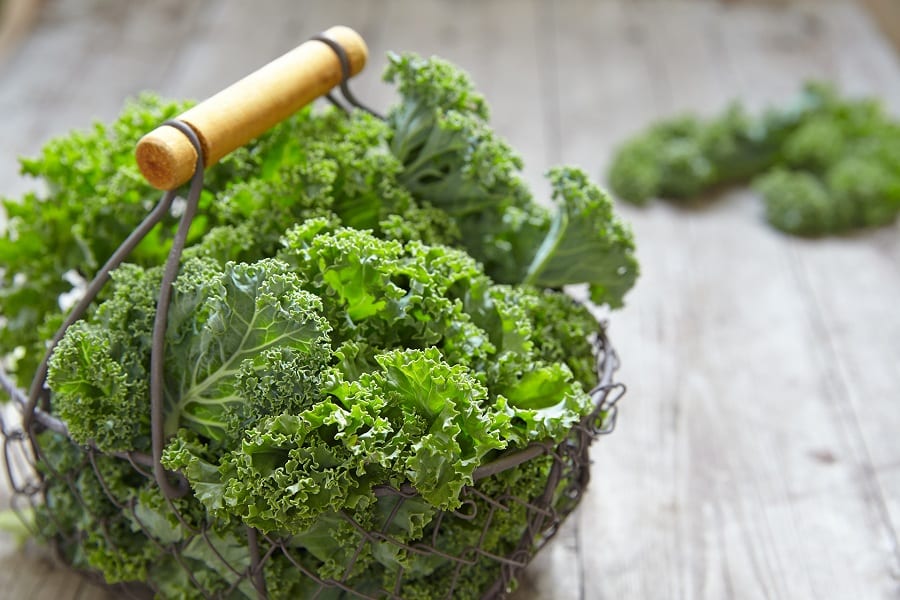If there could only be one vegetable named the shining star of the last decade, it would have to be kale.
This leafy green has become popular after living in the relative shadows for so long, and now it’s hard to find a salad or health food snack that doesn’t feature it.
Kale is a pretty easy vegetable to grow which is good news for beginners and expert green thumbs everywhere, but how does it fare inside the house?
Luckily, learning how to grow kale indoors can be done, as long as you have the right location and all of the other parts working together.
So, how do you grow kale indoors successfully?
To grow kale indoors, you’ll need a sunny spot as they require a lot of light, but thankfully, they don’t need a lot of space.
By using the indoor temperatures to your advantage, you’ll also get a longer growing season compared to keeping them outdoors, so it’s a great way to capitalize on the warmth.
There are so many things you can do with kale once it comes into harvest, including making oven-baked chips, putting it into salads, creating pesto, and adding it to your morning juice.
With full time access to this usually expensive green, you’ll live a healthier life and have the satisfaction that only comes from growing your own food.
Table of Contents
What’s So Great About Kale?
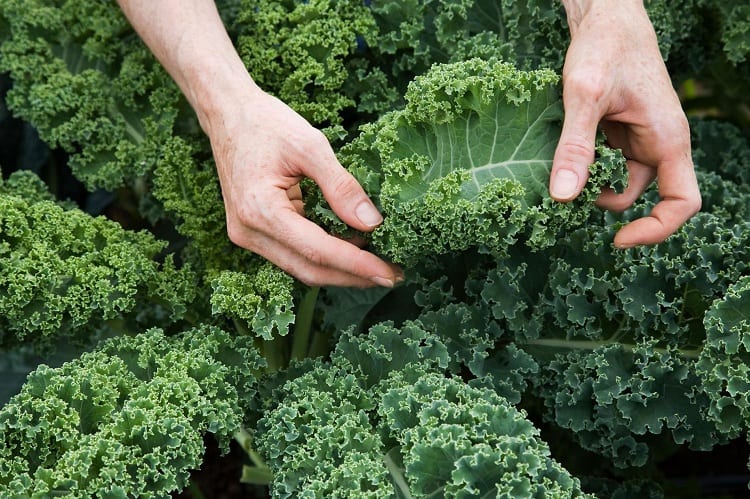
Before we dive into the growing process of kale, it’s good to understand a little more about it and what’s made it so popular in recent years.
Kale is known as the king of the super greens and is a cruciferous vegetable that’s part of the cabbage family, unbeknownst to many.
Kale is packed full of nutrients and has a unique flavor which has earned it an equal number of skeptics as it has lovers.
Those who enjoy its taste will be thrilled to know they can grow it indoors because according to nutritionists, just a single cup of raw kale contains more than your daily requirements in Vitamin A, Vitamin K, and Vitamin C, plus loads of other goodies.
As part of the leafy green bunch, kale has lots of antioxidants, can reduce cholesterol levels, has cancer-fighting contents, and is extremely versatile in that you can eat it raw or cooked.
With your own kale plant on hand, these are all of the daily benefits you could be getting without having to step foot in an outdoor veggie patch.
Is Kale Good for Indoor Planting?
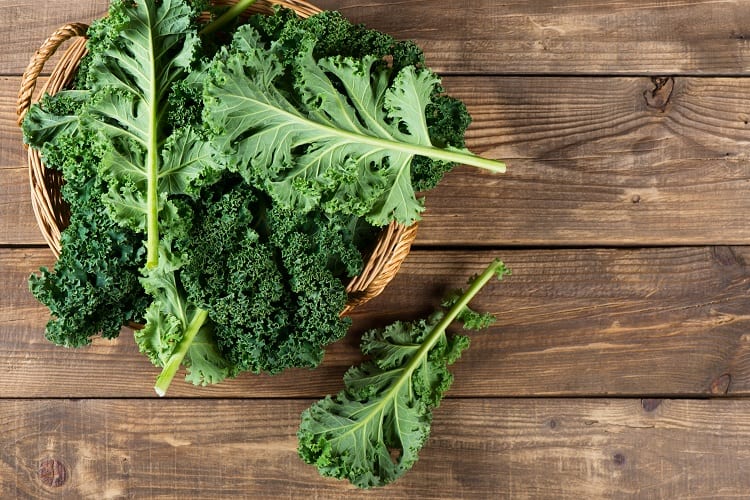
If you want to take advantage of the warmer weather indoors or prefer your gardening to be inside, you’ll be happy to know kale will perform just as well.
Kale is a fairly hardy plant that is usually reserved for outdoor garden beds but can grow nicely in indoor containers as long as the ideal conditions are met.
- Light: Kale should be grown as close to a window as possible because these plants like a lot of sun, with around six hours a day of full sun being ideal. They’re able to handle a wide range of light conditions from part shade to full sun, but should be kept out of direct light if you live somewhere known for being hot or in summer.
- Soil: Kale prefers slightly acidic soil with high organic content because the extra nitrogen will boost its growth. A well-draining soil is also needed, and a fertilizer that provides a lot of nitrogen as well.
- Water: The soil of a kale plant should always be moist and cool, giving them the ideal conditions for healthy growth. If you need to provide added moisture, you can throw some mulch around the plants to help contain it between watering.
- Temperature: Too much heat will damage kale and impact the flavor, making it less tasty, so it doesn’t do as well in hot places. The best soil temperature for growing kale is between 60 to 65 degrees Fahrenheit and the cooler, the better. Growing indoors can be helpful here as the temperatures are usually lower inside, so keep your kale just as comfortable as you like to be.
How to Grow Kale
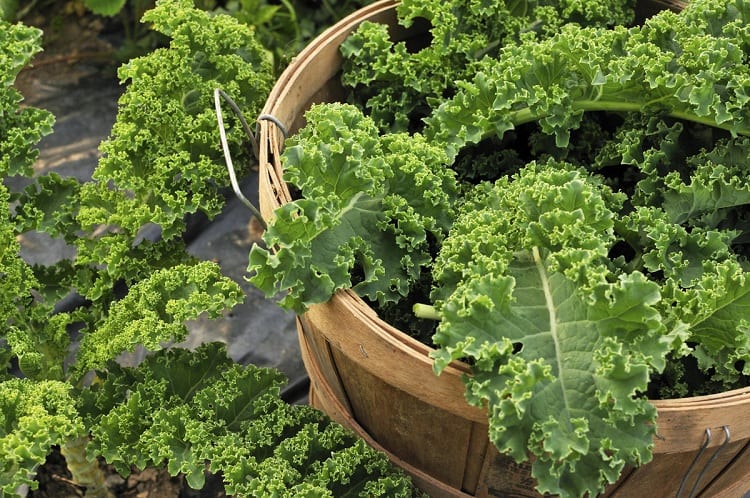
Depending on the life stage of your kale, different strategies might be required to grow them.
Follow these tips for ensuring the best growth for your kale plant, no matter what stage it’s at or where it’s come from.
- Transplanting: Kale is known as an easy grower and does well when transplanted from outside or another container. Give them enough space at the bottom and about six inches on either side to grow, and make sure to water them once they’ve settled in their new home.
- Seedlings: Make a hole in the soil with a wide stick or broom handle and push the seedlings down the bottom before plugging the hole around the roots firmly with soil. Water well and give the kale a few days to start growing. Growing from seed to harvest takes around two months with a well looked after kale plant.
- Mature plant: A mature kale grows between one to two feet tall and wide, so it needs adequate room to reach this size. It’s a biennial plant that takes two years to complete its life cycle, but most people grow it as an annual. Early spring is when it usually blooms but although it flowers, it’s not a plant grown specifically for flowers, so can handle more sun than others.
Fertilization for Kale Plants
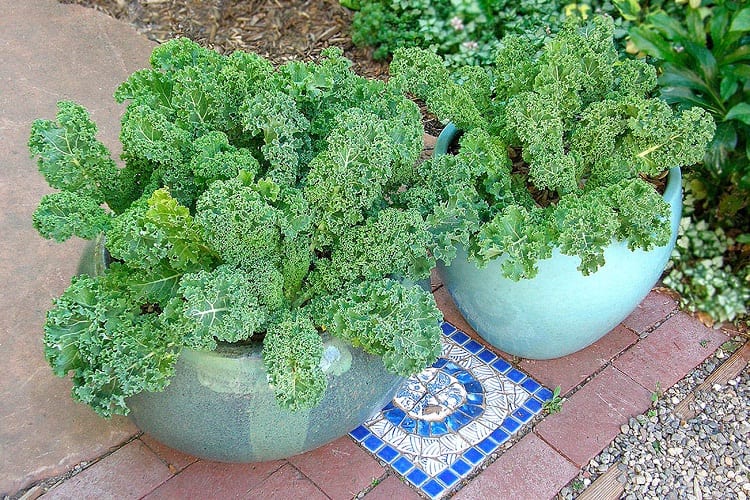
Growing potted kale is slightly different from kale growing in a garden bed or the ground, so their fertilization needs are also unique.
Follow these tips to ensure your kale is being fed the right nutrients for their indoor circumstances and to help them thrive.
- When you plant your original kale, mix a good amount of fertilizer into the top few layers of soil in the pot. As the growing season continues, apply a regular fertilizer every 1-2 weeks as instructed by the label on your chosen fertilizer.
- Choose a nitrogen high fertilizer or use some of your own compost from home if you have it. This will be especially helpful for kale and other vegetables if you’re growing them indoors.
- A water soluble fertilizer is easier to apply for kale and will give a more direct application. As this needs to be applied quite regularly, it’s a simpler method for the gardener as well.
Kale is King Indoors

If you’ve been looking for another reason to love kale, the fact that it can be grown so easily indoors can be added to your list.
This super leafy green will thrive in the right conditions and give you a chance to have a real-life farm to table experience in your own home, without ever having to step outside.
The truth is, no plants were made to be indoors, but some perform perfectly in this setting.
If you’re looking for a healthy and beautiful vegetable that does well in a sunlit room and needs minimal space, kale could be the delicious and nutritious answer you’ve been searching for.
Related Questions
Kale is one of the most popular vegetables to grow because it’s accessible for gardeners of all experience levels and backgrounds.
If you’re looking for more easy plants to get you started or tips on indoor gardening, check out the answers to a few frequently asked questions for a push in the right direction.
If you want an indoor vegetable garden, some plants do better than others in this setting.
Potatoes, carrots, radishes, leafy salad greens, green onions, and most types of herbs will be able to grow with minimal indoor space and the right amount of sunlight, so there’s no need to plant them outside.
A hardy plant is one that’s able to withstand poor conditions and minimal watering, making them ideal for beginner green thumbs and people who want a low maintenance plant that doesn’t need a lot of care.
Some of the hardiest indoor plants include Zanzibar Gem, Aspidistra, Devil’s Ivy, Peace Lily, and Monstera Deliciosa, all being good picks for easy to care greenery.
While studies are still minimal on the air-purifying abilities of indoor plants, they do come with lots of other benefits.
Some people believe that having plants inside acts as a natural filter and provides clean air to them often, and it may do, but the more widely accepted benefits are that they boost the mood, reduce stress levels, and instantly enhance the look of a room.
Recourses:

